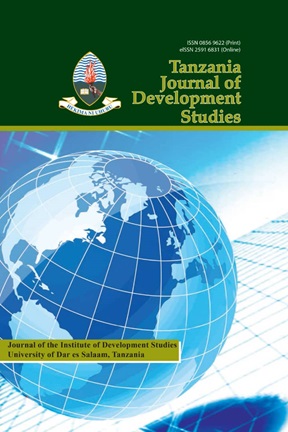Local Participation and Satisfaction with Developmental Projects: Segmentation of Saemaeul Undong Participants in Tanzania
Keywords:
project management, local residents, involvement, Saemaeul Undong, satisfaction, segmentation, TanzaniaAbstract
Abstract Local participation in developmental projects in less developing countries is questionable with empirical results being inconclusive. The purpose of the study reported in this paper was to cluster local residents basing on their perceived levels of involvement and satisfaction in Korean funded projects (Saemaeul Undong) in Tanzania. A structured questionnaire was used to collect data from 171 local residents in the Saemaeul Undong projects in Tanzania. A two-step cluster analysis was performed to explore the possible actionable segments of local residents. Two cluster solutions were deemed valid as they significantly differ with respect to their perceived levels of involvement in the project, satisfaction, and their perceived impacts on the project. For developmental project success, different strategies related to local involvement should be used for the different groups of local residents. The results offer insights on project management, particularly in the use of segmentation approach to the local residents from project design to evaluationReferences
References
Aguilo, E. & J. Rosello. (2005). Host Community Perceptions: A Cluster Analysis. Annals
of Tourism Research, 32(4): 925 €“941.
Arnstein, S.R. (1969). A Ladder of Citizen Participation. Journal of the American Institute of
Planners, 35(4): 216 €“224.
Ashford, N.A. & K.M. Rest. (1999). Public Participation in Contaminated Communities, Center
for Technology, Policy and Industrial Development. Cambridge: MIT.
Chinyele, B. J. & N.B. Lwoga. (2019). Participation in Decision Making Regarding the
Conservation of Heritage Resources and Conservation Attitudes in Kilwa Kisiwani,
Tanzania. Journal of Cultural Heritage Management and Sustainable Development, 9(2): 184 €“198.
Chirenje, L.I., R.A. Giliba & E.B. Musamba. (2013). Local Communities ' Participation in
Decision-Making Processes Through Planning and Budgeting in African Countries.
Chinese Journal of Population Resources and Environment, 11(1): 10 €“16.
Dolnicar, S. (2004). Beyond ' Common Sense Segmentation ' : A Systematic of Segmentation
Approaches in Tourism. Journal of Travel Research, 42, 244 €“250.
Dryglas, D. & M. Salamaga. (2017). Applying Destination Attribute Segmentation To
Health Tourists: A Case Study of Polish Spa Resorts. Journal of Travel and Tourism
Marketing, 34(4): 503 €“514.
Ghazala, M. & R. Vijayendra. (2013). Localizing Development: Does Participation Work?
Washington DC: World Bank.
Hurlbert, M. & J. Gupta. (2015). The Split Ladder of Participation: A Diagnostic, Strategic,
and Evaluation Tool To Assess When Participation Is Necessary. Environmental Science
and Policy, 50, 100 €“113.
Kalandides, K. (2018). Citizen Participation: Towards a Framework for Policy Assessment.
Journal of Place Management and Development, 11(2): 152 €“164.
Layson, J.P. & X. Nankai. (2015) Public Participation and Satisfaction in Urban
Regeneration Projects in Tanzania: The Case of Kariakoo, Dar Es Salaam. Urban,
Planning and Transport Research, 3(1): 68 €“87.
Lee, D.K., K. Cheol & Y. Lee. (2018). The Role and Contribution of Sanlim-Kyes During
Saemaul Undong in the Republic of Korea in the 1970s. Forest Science and Technology,
(2): 47 €“54.
Lew, S. (2012). The Wikinomics of Saemaul Undong. Journal of Social Entrepreneurship, 3(1):
€“73.
Mitchell, R., B. Agle & D. Wood. (1997). Toward a Theory of Stakeholder Identification
and Salience: Defining the Principle of Who and What Really Counts. Academy of
Management Review, 22, 853 €“886.
Orbach, A. (2011). Rethinking Participation, Rethinking Power: Reflections on Local
Autonomy, Canadian Journal of Development Studies, 32(2): 196 €“209


